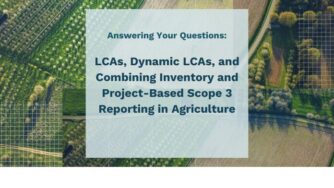Many organizations and growers across agriculture view many economic benefits from the opportunity to attract additional revenue while adopting production practices to reduce greenhouse gas (GHG) emissions, improving soil health and yields, and potentially reducing input use. Cabron markets are being developed to reduce an organization’s own carbon footprint by offering payments to farmers to offset their own carbon emissions and to attract environmentally conscious consumers and investors. Promoting regenerative agriculture leads to many co-benefits, beyond GHG reductions, that positively impact not only farmers but the broader community and food and economic systems. In this blog post, we’ll dig into three key economic benefits that regenerative agriculture provides.
Economic Benefits of Regenerative Agriculture
Rural economic development
Policies to improve soil health and sequester carbon can drive an additional billion annually to rural communities and create added revenue for family farms. Government programs as well as private sector investments provided an expanded revenue stream for rural communities.
Farmer financial security
Investments in soil health and carbon sequestration help farmers secure their operations—improving production long term and creating new revenue streams that can smooth finances in the face of uncertain markets and climate patterns. At the same time, conservation programs can help communities protect the open spaces that they value, diversifying their economies and protecting clean air and clean water for themselves and their neighbors.
Higher farm profitability
Conservation tillage can increase profitability and reduce farm operating costs, since fewer tillage trips reduce fuel use, labor costs, and machinery repair costs. By reducing fuel use, conservation tillage also reduces emissions. Healthy soils are rich in organic matter and microbial activity, which means they sequester more carbon; absorb more water to prevent erosion and topsoil loss during flooding; and can improve crop yields.



